Maui is one of five islands that make up Hawaii and for the 215,000 visitors that come each month, it’s a bit of Big Island amenities with smaller island crowds and options.
This is truly a magical place, from the top of a mountain hike to scuba diving for sea turtles.
One bonus of Maui is there isn’t that one central location where everyone gathers.
Each side of the island offers a little something different.
Sections of Maui:
West Maui:
- Kaanapali is the most popular city here with a whaling village and popular attractions.
- Expect crowds.
South Maui:
- A less crowded, more affordable part of the island.
- It doesn’t have the most amenities or attractions.
East Maui:
- This is where you’ll find the popular Hana Highway (a must-see).
- Smaller area but plenty of small beach options.
- This is the rainiest side of the island.
Central Maui:
- Easy access to other areas of the island.
- There are few beaches, attractions, or amenities.
Upcountry Maui:
- Close to Haleakala crater and national park.
- No beaches and few amenities.
- Ideal for those who want to camp or backpack across the island.
The south and west shores of Maui are known as the leeward side, which means the weather won’t be as much of an issue as on the windward side.
If there’s one word I can use to describe how to prepare for Maui it’s “Reserve.”
Reserve rental cars, reserve hiking spots at parks, and reserve popular tours.
Do all of this at least three, if not six, months ahead of time.
This isn’t a great place for last-minute plans as reservations book up quickly.
Anything you are interested in doing, ask how you can make a reservation to guarantee a spot.
There is an abundance, or overabundance – depending on how you look at it – of information about Maui online.
We’re going to stick just to safety advice in this article from reliable sources.
This is by no means a fully inclusive article about everything Maui, but it will help you be better prepared for your safety while visiting.
Warnings & Dangers in Maui

OVERALL RISK: LOW
There's a low overall risk in Maui. While some cities might have a higher crime rate than others, you should study the Community Crime Map offered by the police department when you are planning your visit. It's not because I don't have data. I do. I just have data from 2020-2022, when travel statistics aren't 100% accurate because of the pandemic and the ripple effect on tourism to and from Hawaii. The Aloha State had some of the strictest COVID policies of all the states, so there are no numbers that accurately reflect safety right now aside from the community crime map. The longer you wait to get that data, the more accurate it will be as travel returns to normal.

TRANSPORT & TAXIS RISK: LOW
You can rent a car here, but reserve it months in advance. There are taxis and shuttles widely available, but again - RESERVE ahead of time when you can. If you are booking your stay at a hotel, ask what kind of free shuttle tours they offer as this could be a cost-saving measure. There's low risk with any option.

PICKPOCKETS RISK: LOW
I went back to 2019 to get this data, and island-wide there were 11 pickpockets or purse snatchings. The average loss was $300-$500. That is still a low risk considering how many people visit here, but in any tourist destination, you will need to be prepared in advance for pickpocketers looking for an opportunity.

NATURAL DISASTERS RISK: LOW
On an average day, there is a low risk. There are some very dangerous disasters to learn about before you go. Hurricanes, tsunamis, volcanos, flash flooding, and rogue waves are the biggest risks. Aside from the volcanos, you get a pretty good heads up about a pending disaster. It's important here to know today's weather AND yesterday's weather. The day before heavy rains could still be causing flash flooding in popular hiking areas.

MUGGING RISK: LOW
In 2019, there were 13 highway robberies, which means a robbery in public. That's a low risk but also an eye-opening reminder that this is a place like any area in the U.S. that has crime, no matter how much it looks like paradise.

TERRORISM RISK: MEDIUM
There's a medium ongoing risk here because of this being the only U.S. state close to allies and enemies on the other side of the world from the mainland. The United States learned the hard way in the Pearl Harbor attack just how vulnerable this area is. It's also not an easy place to escape from if it is attacked.

SCAMS RISK: MEDIUM
There's a medium risk with any trip to Hawaii, and that includes the planning you are doing now. Rental scams are the biggest risk. Even if you book through a popular site like Airbnb or VRBO, make sure the person renting the home or condo has the right to rent that building and never wire cash in advance. You'll feel like you are being scammed with some of the prices here, but all of the islands are notoriously expensive. A local told me that a basic breakfast for a family of four can easily run you $100. If you are staying in a condo, it would be wise to stock up at Costco after you land. You'll still pay up to $8 for a gallon of milk.

WOMEN TRAVELERS RISK: LOW
Women shouldn't feel anything but a low risk, but especially if traveling alone there will be limits on what you can safely do. Any ocean or hiking activity is strongly recommended to include at least two people. Avoid walking around at night after dark, especially in smaller cities that aren't crowded with other tourists.

TAP WATER RISK: LOW
Each area of Maui has its own water system, so you'll need to study the latest annual water quality report available on the county's website before you go. There are twelve total. Some people complain about the taste of the water in Hawaii and opt to bring their own filter. As of mid-2022, no water systems had any violations.
Safest Places to Visit in Maui
It’s important to note that even the safest places in Maui have a few dangerous elements if you aren’t prepared.
Once you’ve selected your activities you should thoroughly research the risks and prepare yourself for the safety visit possible.
Turtle Town is a stretch of land in the southern region that includes some of the best sea turtle viewing areas and tours island-wide.
The water is calmer here because it’s protected from the winds by Haleakala.
Maluaka Beach is one of the most popular spots for sea turtle sightings.
Haleakala National Park is another must-see in Maui.
You can see the top of the crater from anywhere on the island and the hike to the top is invigorating, stretching 10,000 feet above sea level.
This is a dormant volcano, so no risk of eruption exists.
If you’re planning this on your visit, get there for the sunrise.
You won’t regret the early wake-up call.
There are more than 30,000 acres to explore here, so don’t just fix your sights on the crater.
There is a red desert, waterfalls cascading over lush greenery, and rock formations you won’t see anywhere else on earth.
This is considered a sacred place, so you might see natives doing ceremonies or dancing while you’re there.
Waiʻānapanapa State Park is famous for its black sandy beaches.
Here you’ll find historic trails, sea stacks, and blowholes but the main attraction continues to be the panoramic views.
This isn’t the place where you want to hop in the water because it’s known for having a lot of stinging animals in the water and rough surf.
Even the beach littered with black pebbles makes it clear this isn’t a place to comfortably rest.
The Hana Highway is a road trip like no other.
You can drive it yourself or take a shuttle with massive windows so you don’t miss a thing.
Along the Hana Highway there are dozens of sightseeing locations, so plan the trip before you go.
One travel hack:
Some of these spots are where tourists just stop for a quick picture and leave, so even if a parking lot is full, drive around a few times to see if a spot opens up.
While the road to Hana is less than 65 miles long, it’s best if you can take two days to drive that length since there’s so much to see and do.
Places to Avoid in Maui
This is an answer that is going to be a little different for everyone.
I urge you to review the districts of Maui and see which one, two, or three will fit your travel needs.
For example, I’m an outdoorsy person as long as I can sleep in a luxury bed at the end of the day and I like to have shopping and good food around me.
So Central and Upcountry wouldn’t be ideal for me.
I could have told you this before I looked at the crime maps, but the areas that have more tourism amenities are going to have more crime.
There is no particular tourist area to avoid in Maui, but I’d definitely recommend avoiding the lowest price for accommodations just to get the low price.
You have to factor in the travel you want to do, how important good restaurants are, and how close to the beach vs. the mountain you want to be.
If you don’t like to deal with a lot of rain, avoid the windward side of the island.
It’s going to rain more there in frequency and duration.
Follow the directions of all signage and know that a sign warning of dangers was most likely put up because some died or got seriously hurt there.
Avoid going over or around a fence to get a closer look down a cliff.
Those signs can save lives if followed.
Avoid blowholes except admiring them from a distance.
These beautiful carvings of nature allow water to spew up and it’s tempting to get close and enjoy the spray of the water.
A simple search of “Maui” and “Blowhole” will bring up a story from 2012 when a man was dancing in the spray of a blowhole and was sucked in.
His body was blown back up by the water and then disappeared forever.
His travel companion could only watch in horror.
If you like to lay on the car horn when you’re in traffic, you’ll have to stop that habit here.
It’s considered extremely rude to honk the horn here for any reason other than one that is life-threatening.
Safety Tips for Traveling to Maui
- On the Maui County website, you will find an alerts section. There’s a mobile app you can download for Hawaii that will give you civil notifications and weather emergency details as they happen. You must be always prepared for a worst-case scenario while visiting Maui.
- There’s a product called Jellyfish Squish available for purchase in stores in Maui or online ahead of time. This unique formula helps take the pain out of a jellyfish sting, which is a real possibility while you’re visiting Maui. It is said to work on any bite or sting that is from a non-venomous creature.
- You have to check the weather each day while you’re visiting Maui because the weather of today (and yesterday, as we discussed) will impact what you do today. There’s a toll-free number to the National Weather Service. That is (866)944-5025.
- When you are looking for a spot to relax on or near the beach, look up. Avoid parking yourself under a coconut tree. Those coconuts can fall and be very painful. In fact, falling coconuts lead to 150 deaths each year.
- There are a few sayings that you will hear or see often in Hawaii. One is “When in Doubt, Don’t Go Out” and the other is “Never turn your back on the ocean.” This is all because of necessary water safety. If you are not 100% sure you can handle the conditions of the water, stay on the beach. Avoid the area where the surf breaks as waves come crashing down hard here. Turning your back on the ocean is another danger because a sudden high wave can sweep over you and carry you out to sea.
- Honor the “Curse of Pele” in Hawaii by not taking any rocks, sand, flowers, or plants from the adventures you go on in Maui (or any part of Hawaii). Pele is the volcano goddess of the big island and it’s said that anyone who takes natural items from Hawaii will be cursed with bad luck forever. If that’s not enough, it’s illegal too.
- Swimming with sea turtles or other fish generally happens near a coral reef. You must wear reef shoes when visiting these areas and never go when the ocean surf is rough. The coral can cause very bad injuries and cuts to an inattentive diver or snorkeler. Also, it’s illegal to touch sea turtles. You must stay at least 10 feet away from a sea turtle at all times. One more thing – if you step on the coral reef you could get kicked off the beach if a lifeguard sees it.
- There is an ongoing crime trend of cars getting broken into and the warnings themselves on just about every site you visit to learn about Maui really punctuate the point. Leave any valuables at the hotel or condo, don’t load up the trunk in public, and lock all the doors while rolling up windows when you park. Even something like your GPS holder is enough to tempt someone to break in looking for the device.
- Hiking and snorkeling alone are strongly discouraged. In the wilderness, you’re facing a lack of mobile service, heavily vegetated areas with roads too small for an ambulance, and many safety risks along the way. If you get hurt you might have no way to call for help and be stuck. In the water, it’s important to have someone keeping an eye on the waves and the wind so you don’t accidentally drown when a wave crashes on your snorkel site or a rip current pulls you out to sea. Always find a buddy and if you don’t have a buddy then schedule a tour for your preferred excursion.
- No matter how strong of a swimmer you believe yourself to be, you have to realize the currents here are stronger than any other place you’ve been. There are hazard warnings along the beaches to let you know the real dangers of the current, not just what you think you can see. A calm sea could have a wicked undercurrent just a few feet down.
So... How Safe Is Maui Really?
It’s hard to make one statement for the entire island.
While each district comes with its own appeal, it also comes with its own warnings and safety advice.
One thing that is repeated across all kinds of safety information I researched is to stay away from the towns that don’t cater to tourists.
There is a whole diverse population here with simple everyday things, like wearing shoes inside, that could be offensive.
It’s best to stay in tourist areas with guided tours as much as possible so you get the best value and safety steps during your visit.
The Crime Mapping function is your best way to see the crimes happening in certain areas closer to your visit dates, but it’s an ongoing crime trend to have those car break-ins, so really consider if you can practice impeccable auto safety when traveling on vacation.
The most dangerous risks that exist in Maui are the natural ones if you aren’t prepared or educated.
Just because you’ve visited Florida beaches before doesn’t mean you understand even a fraction of what to expect from Hawaiian beaches.
How Does Maui Compare?
| City | Safety Index |
|---|---|
| Maui | 91 |
| Deadwood | 80 |
| Sturgis | 80 |
| Pierre | 81 |
| Spearfish | 80 |
| Hill City | 83 |
| Sevierville | 73 |
| Temuco (Chile) | 31 |
| Puno (Peru) | 45 |
| Nara (Japan) | 88 |
| Kanazawa (Japan) | 83 |
| Hammamet (Tunisia) | 78 |
| Sidi Bou Said (Tunisia) | 42 |
Useful Information

Visas
You won't need a Visa if you are a resident of the United States since Hawaii is one of the 50 states. Those who aren't U.S. Citizens will need the same Visa as required for any of the mainland states. You will present that before you can be allowed on U.S. soil and that happens shortly after you leave the airplane.

Currency
The U.S. Dollar is the only currency allowed here. Try to book as much as you can ahead of time so you don't have to pull out your wallet often. Since many of the attractions and tours require reservations, it's a win/win.

Weather
The weather doesn't change much from season to season, but the rainy season happens in the winter. You won't ever need a coat or sweater, but good hiking shoes, plenty of changes of socks, rain gear, sunscreen, and bug spray are a must.

Airports
There is an airport on Maui (OGG) that has a handful of flights from the mainland, but the major airport in Honolulu (HNL) has the most flights back and forth. There are two airports on the Big Island; Hilo International Airport (ITO) and Kona International Airport (KOA). KOA is the airport with the mainland flights while ITO is mostly inter-island travel.

Travel Insurance
As we've discussed, there are a lot of safety concerns in Maui but travel insurance helps you be prepared for the unexpected. It can also help if there are flight delays to the mainland or if your baggage gets lost on the other side of the ocean.
Maui Weather Averages (Temperatures)
Average High/Low Temperature
| Temperature / Month | Jan | Feb | Mar | Apr | May | Jun | Jul | Aug | Sep | Oct | Nov | Dec |
|---|---|---|---|---|---|---|---|---|---|---|---|---|
| High °C |
21 | 21 | 22 | 23 | 23 | 24 | 25 | 26 | 25 | 25 | 24 | 22 |
| Low °C |
13 | 13 | 13 | 13 | 14 | 15 | 16 | 16 | 16 | 15 | 15 | 14 |
| High °F |
70 | 70 | 72 | 73 | 73 | 75 | 77 | 79 | 77 | 77 | 75 | 72 |
| Low °F |
55 | 55 | 55 | 55 | 57 | 59 | 61 | 61 | 61 | 59 | 59 | 57 |
Hawaii - Safety by City
| City | Safety Index |
|---|---|
| Hilo | 65 |
| Honolulu | 65 |
| Kailua-Kona | 84 |
| Lanai City | 89 |
| Maui | 91 |
| Princeville | 88 |
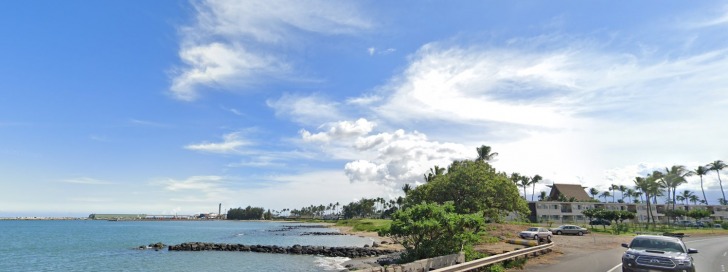
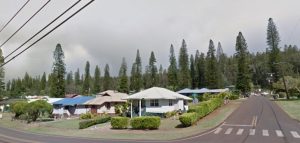
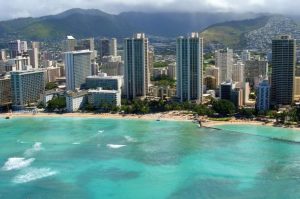
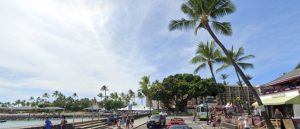
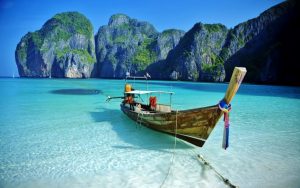
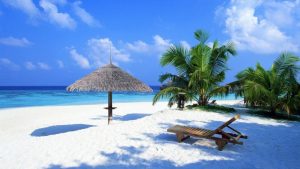
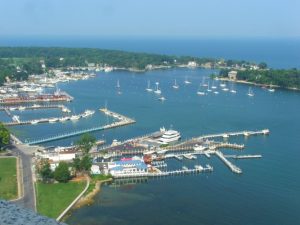





Safe beaches
Spent two weeks in Maui and I had a blast, the beach there is always secure since there are police roaming around the area almost 24/7.
Maui is not only breathtaking but also incredibly safe. Whether exploring the Road to Hana or relaxing on the beaches, the island’s commitment to safety enhances the overall travel experience.